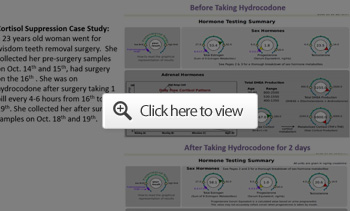The Heroin Epidemic
By Dr. Mercola
Heroin addiction is becoming a serious problem in the U.S., and far from being an inner-city problem, heroin addicts abound in the suburbs of America.
According to the Centers for Disease Control and Prevention (CDC),1 lethal heroin overdoses nearly quadrupled between 2000 and 2013 in the U.S., escalating from 0.7 to 2.7 deaths per 100,000 during this timeframe.
In 2013, more than 46,000 Americans died from drug overdoses, with prescription drugs and heroin topping the list.2 Half, or about 23,000, of these lethal overdoses were due to prescription drugs, with painkillers accounting for about 16,000 deaths.3 About 8,000 deaths were due to heroin.
As discussed in the featured 60 Minutes segment, “Heroin in the Heartland,”4,5heroin addiction is fueled by legal drug addiction to opioid painkillers which, from a chemical standpoint, are nearly identical to heroin.connection with others.
Drug addiction is just one type of unhealthy bonding that can take place in lieu of bonding with friends and family. To break addiction — an unhealthy bond — you must replace it with healthier bonds. In this view, drug addiction is a symptom of disconnection; not the inevitable result of being exposed to a drug.
Factors like loneliness and grief are also known to worsen pain, so taking steps to build and nurture a stronger social network may indeed be an important part of your recovery — both from pain and from addiction.
Case Study Reveals How Painkillers Promote Adrenal Fatigue
I recently received an interesting case study from Mark Newman, President of Precision Analytical, Inc. (my favorite hormone testing service, and the one I use personally). A 23-year-old woman was given hydrocodone after getting her wisdom teeth extracted. Her sex hormones and adrenal hormones were tested before taking the drug, and again after taking hydrocodone every four to six hours for two days.
At that point, after just two days on the painkiller, her cortisol production was completely demolished, while her sex hormone levels remained stable — the outcome of which is adrenal fatigue, which in turn can set a cascade of disease processes into motion.
Non-Drug Alternatives for Pain Relief
With all the health risks associated with opioid painkillers, I strongly urge you to exhaust other options before resorting to these drugs. Below I list some of the most effective non-drug alternatives for the treatment of pain that I know of. If you’re in pain, I recommend trying these first, before even thinking about prescription painkillers of any kind.
There is another option that involves reeducating pain pathways through neuroplasticity that Norman Doidge discusses in his new book, “Healing the Brain.” I will be interviewing him shortly about this exciting possibility.
Sources and References
- 1 Medical News Today March 5, 2015
- 2 CBS News November 5, 2015
- 3 CDC.gov Prescription Drug Overdoses Data
- 4, 11 CBS News, Heroin in the Heartland
- 5, 16 Forbes November 2, 2015
- 6 Reuters November 4, 2015
- 7 Forbes November 1, 2015
- 8 DEA.gov, National Heroin Drug Threat Assessment Report 2015 (PDF)
- 9 Time November 4, 2015
- 10 Meryl Nass MD Blog September 7, 2015
- 12 Daily Herald November 2, 2015
- 13 Epoch Times November 4, 2015
- 14 Kaiser Health News November 4, 2015
- 15 US DEA Drug Schedules
- 17 The Atlantic November 4, 2015
- 18 Journal of Pain, Cannabis studies
- 19 Change.org, Fire DEA Chief
- 20 Time November 10, 2015
- 21 Change.org Fire Anti-Marijuana DEA Administrator Michele Leonhart
- 22 New York Times April 21, 2015
- 23 Washington Post November 11, 2015
- 24 The Atlantic November 5, 2015
- 25 Journal of Pain April 2004: 5(3); S52
- 26 Arthritis & Rheumatism, Volume 54, Issue 11, pages 3452–3464, November 2006
The post The Heroin Epidemic appeared first on LewRockwell.




Leave a Reply